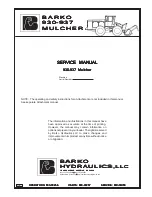Summary of Contents for OS-5060A
Page 1: ...Oscilloscope Analog Oscilloscope Operation Manual Free Datasheet http www datasheet4u com ...
Page 2: ...Oscilloscope Analog Oscilloscope Operation Manual Free Datasheet http www datasheet4u com ...
Page 13: ...12 Free Datasheet http www datasheet4u com ...
Page 27: ...FIGURE 2 3 USING THE TV SYNC SEPARATOR Free Datasheet http www datasheet4u com ...
Page 30: ...FIGURE 2 4 TRIGGER SLOPE SELECTION Free Datasheet http www datasheet4u com ...
Page 35: ...FIGURE 2 5 SWEEP MAGNIFICATION BY THE B TIME BASE Free Datasheet http www datasheet4u com ...
Page 43: ...FIGURE 2 8 TIME INTERVAL MEASUREMENT Free Datasheet http www datasheet4u com ...
Page 49: ...FIGURE 2 11 RISETIME MEASUREMENT Free Datasheet http www datasheet4u com ...
Page 51: ...4 DIAGRAMS 4 1 EXTERNAL VIEWS Free Datasheet http www datasheet4u com ...
Page 52: ...4 2 BLOCK DIAGRAMS Free Datasheet http www datasheet4u com ...



































